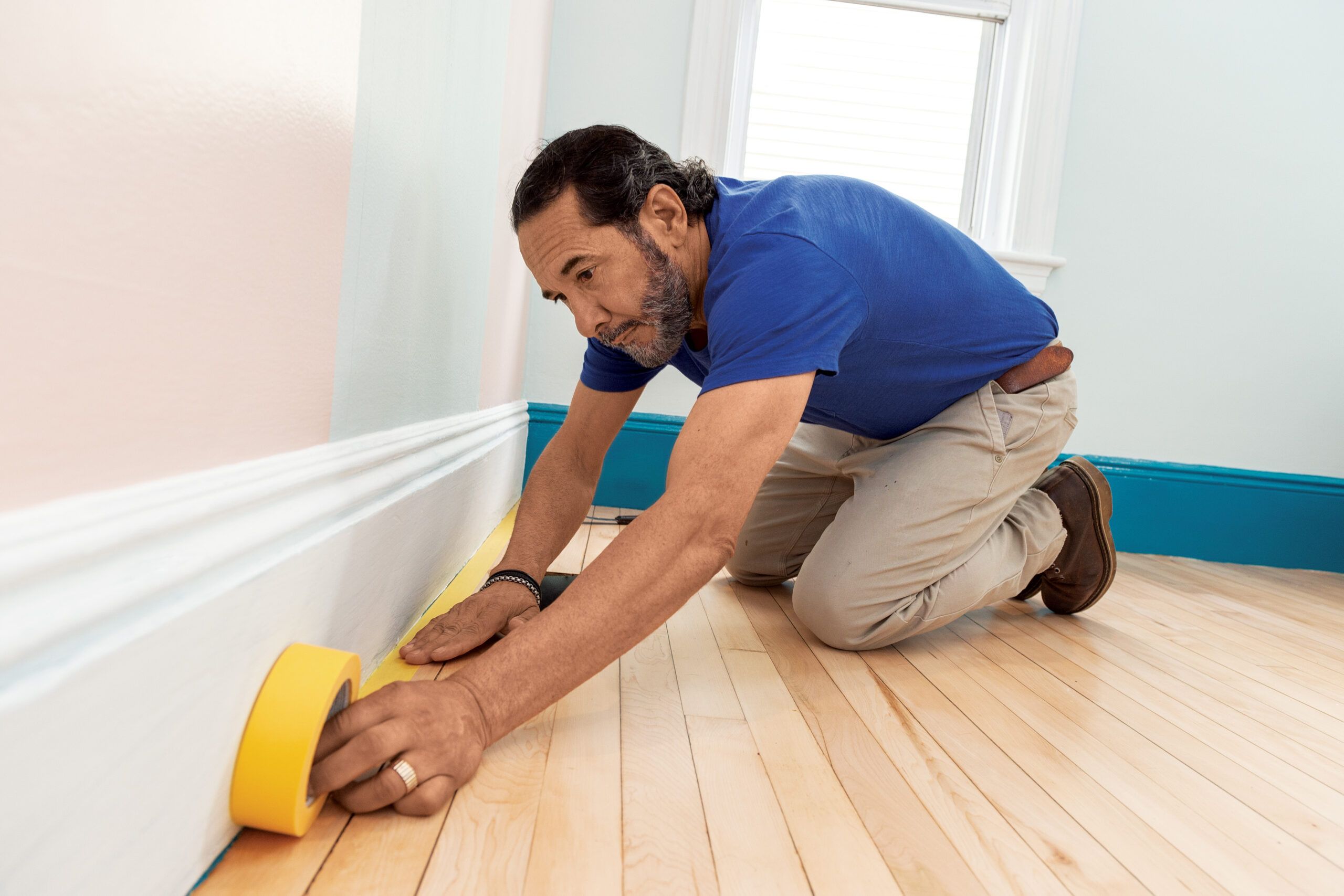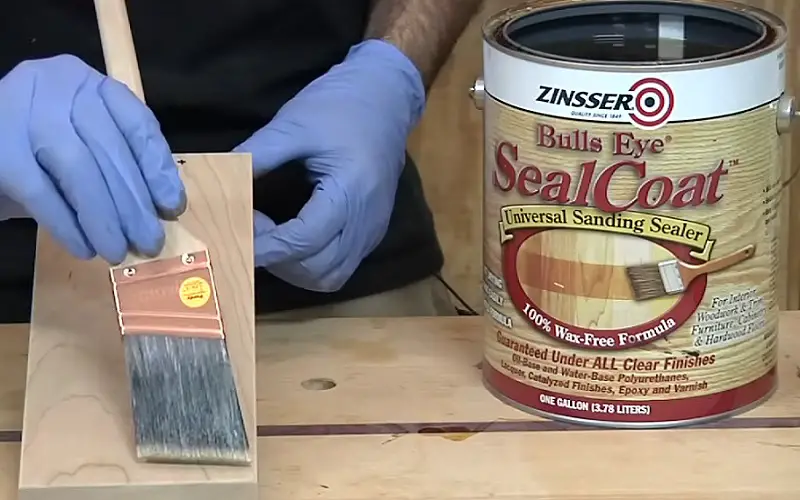Yes, you can apply polyurethane over shellac as long as the shellac has fully dried. Applying polyurethane over shellac is a common practice to enhance the durability and longevity of the finish.
The key is to ensure that the shellac is completely cured before applying the polyurethane. This combination can create a strong and protective finish for your wood surfaces.
By following the proper application techniques and allowing each layer to cure properly, you can achieve a beautiful and long-lasting finish for your projects.
Contents
- Understanding Shellac And Polyurethane
- Compatibility Of Shellac And Polyurethane
- Preparation Steps
- Applying Polyurethane Over Shellac
- Troubleshooting And Tips
- Frequently Asked Questions Of Can You Put Polyurethane Over Shellac
- Conclusion
Understanding Shellac And Polyurethane
What Is Shellac?
Shellac is a natural resin that comes from the secretions of the lac bug. It is often used as a protective wood finish due to its high gloss and quick drying properties.
What Is Polyurethane?
Polyurethane is a synthetic material commonly used as a protective coating on various surfaces, including wood. It offers durable and long-lasting protection against wear and tear.
Differences Between Shellac And Polyurethane
- Shellac is natural, while polyurethane is synthetic.
- Shellac dries quickly but is not as durable as polyurethane.
- Polyurethane provides better protection against water and heat compared to shellac.

Compatibility Of Shellac And Polyurethane
Shellac and polyurethane are two popular finishes used in woodworking, each offering its unique set of benefits. When it comes to combining these finishes, a common question arises:
Can You Apply Polyurethane Over Shellac?
Yes, you can apply polyurethane over shellac. However, it’s essential to understand the potential issues that may arise from this combination.
While it is generally possible to apply polyurethane over shellac, proper preparation and consideration of certain factors are crucial to ensure a successful application.
Factors To Consider Before Applying Polyurethane Over Shellac
Several factors should be taken into account before applying polyurethane over shellac to ensure compatibility and adhesion:
- Cleanliness: Ensure the shellac surface is free from dust, dirt, and any contaminants that may hinder adhesion.
- Compatibility Testing: It’s advisable to conduct a small test application of polyurethane over a section of the shellac to check for any adverse reactions or lack of adhesion.
- Curing Time: Allow the shellac to cure thoroughly before applying polyurethane to prevent potential bonding issues.
- Sanding: Lightly sand the shellac surface to create a better mechanical bond for the polyurethane to adhere to.
By considering these factors and taking the necessary precautions, you can enhance the compatibility and adhesion of polyurethane over shellac, resulting in a durable and appealing finish.
Preparation Steps
In the process of applying polyurethane over shellac, proper preparation is crucial to ensure a smooth and durable finish.
Adequate preparation involves inspecting the shellac, cleaning and sanding the surface, choosing the right polyurethane, and preparing the workspace.
These steps are essential to achieve a successful application and ensure the longevity of the finish.
Inspecting The Shellac
Before applying polyurethane over shellac, it’s important to inspect the current condition of the shellac finish. Look for any signs of damage, peeling, or discoloration.
Check for uneven application or irregularities on the surface. Ensure that the shellac is fully cured and free from any contaminants such as wax or oils that may affect the adhesion of the polyurethane.
Cleaning And Sanding The Surface
Next, thoroughly clean the surface to remove any dirt, dust, or residue that may have accumulated on the shellac. Use a gentle cleaner and avoid harsh chemicals that can damage the finish.
Once clean, lightly sand the shellac to create a smooth surface for the polyurethane to adhere to. Use fine-grit sandpaper to avoid damaging the shellac. After sanding, ensure the surface is completely dust-free before proceeding.
Choosing The Right Polyurethane
When selecting a polyurethane for application over shellac, consider the type of finish you desire. Choose between oil-based or water-based polyurethane based on the specific needs of your project.
Additionally, consider factors such as sheen, durability, and drying time to select the most suitable polyurethane for your application.
Preparing The Workspace
Prior to applying polyurethane, prepare the workspace by ensuring proper ventilation and controlling dust and debris. Use drop cloths to protect surrounding areas from drips or spills.
Ensure the temperature and humidity levels are within the recommended range for polyurethane application. Having a well-prepared workspace will contribute to a successful and professional-looking finish.
Applying Polyurethane Over Shellac
Using A Brush Or Roller
Brush or roller can be used to apply polyurethane over shellac for a smooth finish.
Applying The First Coat
First coat of polyurethane should be applied evenly to seal the shellac underneath.
Sanding Between Coats
Sand lightly between coats to ensure adhesion and a flawless surface for the next coat.
Applying Subsequent Coats
Each coat of polyurethane should be applied evenly, allowing proper drying time between coats.
Troubleshooting And Tips
Polyurethane can be applied over shellac, but there are a few important steps to follow for successful results.
Make sure to thoroughly clean the surface, sand it lightly, and use an appropriate primer before applying the polyurethane. Proper preparation is key to achieving a durable and long-lasting finish.
Common Issues With Applying Polyurethane Over Shellac
When it comes to applying polyurethane over shellac, there are a few common issues that you may encounter. These issues can affect the overall finish and durability of your project.
Here are some of the most common issues and how to address them:
1. Adhesion problems:
Adhesion problems occur when the polyurethane does not bond properly to the shellac surface. This can result in peeling or flaking of the topcoat. To prevent this, make sure the shellac is fully cured before applying polyurethane and lightly sand the surface to create a better bonding surface.
2. Blistering or bubbling:
Blistering or bubbling can occur if there is moisture trapped between the layers of shellac and polyurethane. To avoid this, ensure that the shellac is completely dry before applying the polyurethane and work in a well-ventilated area to allow any moisture to evaporate.
3. Streaks or brush marks:
Streaks or brush marks can appear if the polyurethane is not applied evenly or if the brush strokes are too visible. To minimize these issues, apply the polyurethane in thin, even coats using a high-quality brush and apply the strokes in the direction of the wood grain.
Tips For A Flawless Finish
Obtaining a flawless finish when applying polyurethane over shellac is possible with the right approach. To achieve the best results, consider the following tips:
1. Proper surface preparation:
Ensure that the shellac is properly sanded and smooth before applying polyurethane. Fill any cracks or imperfections in the shellac surface to ensure a smooth and even final finish.
2. Use high-quality products:
Investing in high-quality polyurethane and shellac can make a big difference in the final results. Look for products that are specifically designed for furniture or woodworking projects, as they often provide better durability and finish.
3. Apply multiple thin coats:
Instead of applying one thick coat, it is better to apply multiple thin coats of polyurethane. This allows for better adhesion and avoids issues like drips or runs. Sand lightly between coats to ensure a smooth finish.
4. Work in a dust-free environment:
Dust particles can easily settle on the wet polyurethane, resulting in an uneven or bumpy surface. Make sure to work in a clean and dust-free environment to ensure a flawless finish.
5. Allow for proper drying and curing time:
Patience is key when it comes to achieving a flawless finish. Allow each coat of polyurethane to dry and cure completely according to the manufacturer’s instructions before applying the next coat or handling the project.

Frequently Asked Questions Of Can You Put Polyurethane Over Shellac
What Finish Can I Put Over Shellac?
Shellac is a versatile finish that can be used on wood. It can be coated with a variety of finishes such as lacquer, varnish, or wax.
The finish you choose will depend on the desired look and level of protection you want for your project.
How Do I Protect My Shellac Finish?
To protect your shellac finish:
1. Clean the surface gently using a non-abrasive cloth.
2. Avoid exposure to direct sunlight or excessive heat.
3. Use coasters or felt pads to prevent scratches from furniture.
4. Apply a thin layer of wax or polish for added protection.
5. Regularly dust and maintain the finish to extend its lifespan.
Can You Put Clear Top Coat On Shellac?
Yes, you can apply a clear top coat on shellac to provide extra protection and shine.
Can I Use Polyurethane Over Sealer?
Yes, you can apply polyurethane over a sealer for added protection and durability to your surface.
Conclusion
Combining polyurethane and shellac can be a tricky process. It’s important to follow proper preparation and application techniques for a successful finish.
Experimentation and testing on a small area are recommended before full application. Remember, patience and attention to detail are key in achieving the desired results.

